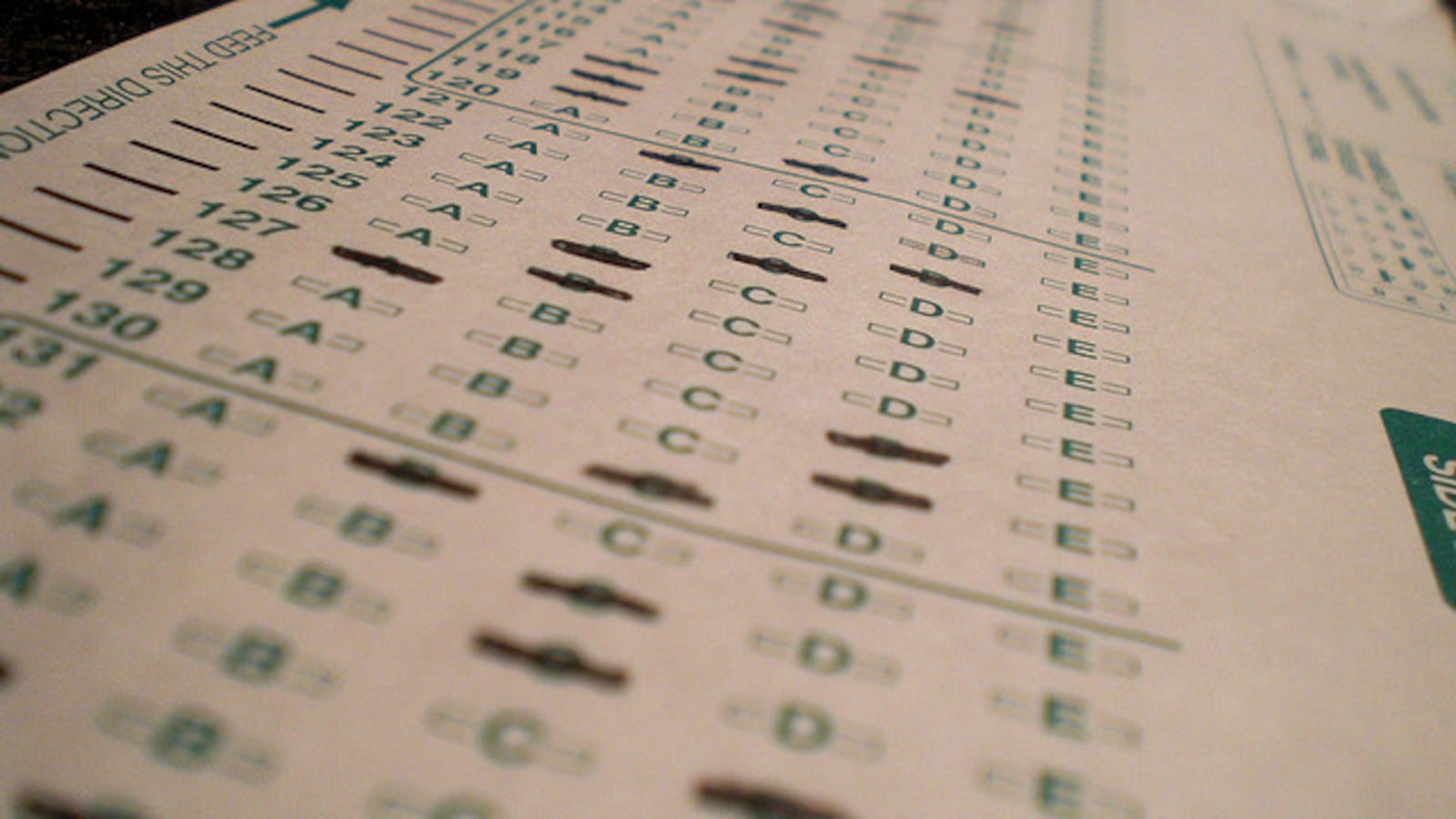Coming off a tough year in which nearly two dozen Detroit schools were threatened with closure because of years of low test scores, the city school system is starting the new school year with a bit of good news: District scores are up slightly on average in several grades and subjects compared to last year.
The 2017 M-STEP scores, released Tuesday by the Michigan Department of Education, show that the vast majority of Detroit students are still struggling. Just 9.9 percent of third-graders posted a passing score on the state English Language Arts exam while 12.3 percent of third graders passed the math test.
But passing rates were up slightly for Detroit district students in third, fourth and seventh grade math compared to 2016 and the percent passing the reading test was up in 5th and 6th grades. (Details here).
(Scroll down to see results for all Michigan schools).
Across the state, Michigan students on average showed improvement in math and social studies and posted mixed results in science but reading scores were troubling.
“The spring 2017 results show math and social studies scores are continuing to improve, and that is exciting news,” state superintendent Brian Whiston said in a statement. “The English language arts scores are disappointing, however.”
The disappointing scores come as schools across the state are gearing up for tougher new third-grade reading requirements. Beginning in 2020, state law will require schools to hold back third graders who can’t pass the reading test.
Because the M-STEP is administered primarily only in grades 3-8, the new tougher law doesn’t apply to kids who took the exam last spring. The first kids to be subjected to the new law are now entering first grade but this year’s scores will likely serve as a wake-up call to schools across the state. In third grade, just 44.1 percent of students passed the exam in 2017 compared to 46 percent of third-graders in 2016 and 50 percent in 2015.
“It is important that we keep working with [county intermediate school districts] and local school districts to provide support and assistance to help all of their students achieve at higher levels,” Whiston said. “I am confident that investments in early childhood education and literacy supports will bring improvement and growth. We need to stay focused and diligent.”
The M-STEP exam was administered last spring for the third time. The exam first replaced the MEAP test in 2015.
The state Tuesday also released SAT scores, which Michigan is using for the second year to measure student performance in 11th grade. Across the state, SAT scores were up compared to 2016 while they were down slightly in Detroit.
The M-STEP and SAT are the high-stakes exams that have been used in recent years as the primary basis to calculate school rankings in Michigan. Officials have used those rankings in the past to identify schools for state intervention. Earlier this year, the state put 38 schools — including 24 in the city of Detroit — on notice that they would be closed after landing in the bottom five percent of state rankings for three years in a row. (Changes to the way those rankings have been calculated have been controversial).
The state backed down on school closings after strong political and logistical opposition and entered into “partnership agreements” with the affected districts that gave those districts 18 months to turn things around.
How those schools performed on the M-STEP is difficult to tell from publicly released data because, in many of those schools, scores have been so low in the last two years that the scores fell below the 5 percent threshold for state reporting.
Click here for more details on how the Detroit Public Schools Community District and the Education Achievement Authority performed on average on the exam. The EAA schools became part of the main Detroit district last month after five years in the state-run recovery district.
For more information about how schools performed on the test across the state, here’s a press release from the Michigan Department of Education.
Look up scores for individual schools across the state below. Just type in your school’s name. Or go to the state education department website to download extensive data on the scores including those for special education students and other groups.

